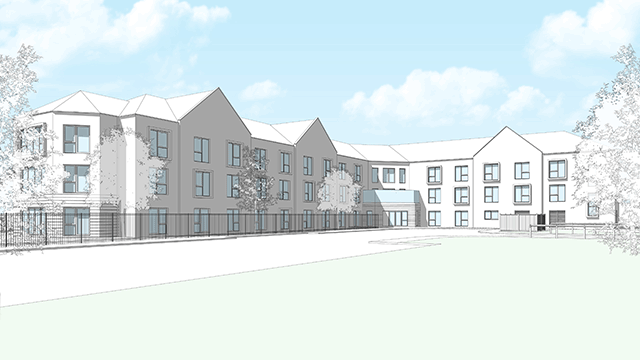Six years after it was begun, the draft UDP for Leeds has been released – and its recommendations are proving controversial. Anita Howarth reports
He is only in his late 30s. But by the time the Leeds UDP has run its course, King Sturge planning partner Gary Deane will be contemplating retirement, having spent 23 years – most of his working life – dealing with it.
In theory, the property industry should welcome the long-term vision that comes with the inspectors’ decision to extend the lifetime of the plan beyond its original 2006 to 2016.
And, in reality, some in Leeds will. Especially those landowners and funds sitting on the 211.5ha (522.6 acres) of employment land that the inspectors added and which was not expected to come forward for development until the next UDP.
But the plan is a mess. After six years of the longest-ever inquiry into a development plan, the Leeds version looks set to be mired in another round of controversy and is unlikely to be adopted before the turn of century.
Landowners that found their sites among the 172.8ha (427 acres) recommended for deletion from the category of employment land are angry. Some of them have sat on these sites for 10 years in the belief that, because Leeds council was backing them, they would eventually come forward for employment-related development.
Landowner aggrieved
One of these landowners, although reluctant to go on the record, privately admits that he feels aggrieved because the inspectors recommended that the former British Coal site at Skelton be designated a business park – despite the latter’s late entry and the fact the council did not pick it up.
At the same time, the report recommends that the council’s preferred 66.8ha (165 acre) business park at Parlington be deleted as an employment site from the UDP.
With nearly 404.7ha (1,000 acres) of employment land modified in the inspectors’ report, it is hardly surprising that Leeds council is confused. Unusually, it has written to the inspectorate asking for an explanation before it decides which recommendations to accept or reject. Deane believes that they “will be damned if they do and damned if they don’t”.
Irrespective of what the council does, it will face objections. The effect will be delay and uncertainty that undermines the advantage of extending the plan from 2006 to 2016.
Even so, GVA Grimley planning partner Beverley Smith argues that this extension has allowed the inspectors to recommend a 72% increase in the requirement for employment land on that of 2006.
But she warns: “Some of the sites are constrained. Some are currently in green belt areas. Some have been deleted.
“There will be objections and an entire round of new consultation will be needed, plus a lifetime of bringing some of these sites forward.”
The environmental lobby, in particular the Council for the Protection of Rural England, is likely to challenge the green belt implications of some recommendations. The inspectors took the view that the original green belt had been too tightly drawn and had led to development pressure on the urban fringe. Now they have set out to ensure there is sufficient employment land, plus some in reserve.
Interim green belt classification
But, controversially, a number of the sites backed by the inspectors fall into the statutory green belt category, such as Tingley Common or, like Temple Newsam, are classed as interim green belt. “Interim” green belt includes sites likely to be given full protection in the future when the green belt is reviewed. However, the report says that these are not green belt and Leeds council must not treat them as such.
The Temple Newsam site is doubly controversial because it was a council-proposed green corridor. CPRE spokesman Dr Jim Burton argues that employment-related considerations are irrelevant in green corridors. “These are areas that allow wildlife to make annual migrations,” he says. “There are major implications if you interfere with these and we would take very seriously indeed any attempt to do that.”
Eversheds planning solicitor Marian Griffiths argues that: “On balance, the inspectors have sought to protect the statutory green belt. A significant proportion of the sites they have recommended be withdrawn were in the green belt. Instead, they have brought forward more brownfield sites.”
Green belt development resistance
But Burton says: “We would like to see no development in the green belt at all unless there was no other option. I find it difficult to believe that all alternative brownfield options have been considered.”
GVAGrimley’s Smith also questions whether the overall plan ensures sustainable development. “If we consider the distribution of the employment sites added to the list, it is clear that the inspector is perpetuating the pattern of employment, which is concentrated to the south and south-east of the city.”
She adds: “It raises issues of sustainability and reducing reliance on the car while also ensuring that everybody has access to a job. If nearly all the sites likely to come forward for office development are in the south and south-east, what about the people who live to the north, which is the most attractive part? It means they will have to travel across the city.”
This will significantly increase car journeys at a time when ministers have given no indication of when they will make an announcement on funding for the proposed super-tram across Leeds.
Tom Watson, industrial partner at King Sturge, also identifies planning problems with those employment sites within the city boundaries and located near homes. “Residential development has encroached on to the edge of industrial estates. We are involved in at least one major industrial estate that is in the process of being redeveloped, but the planners and highways authorities are restricting the hours of work.
“This means that all work has to stop after 11pm – and the main distribution players are not going to come if they can’t run all-night operations.”
Many of the new rows will ensue from recommended changes to designation of sites – that they should be depleted or allowed. Such changes will affect over 404.7ha (1,000 acres). But these recommendations extend from estimates of how much land will be required which are based on average take-up rates between 1985 and 1994.
Deane states: “The problem with going back to 1985-94 figures on which to base your estimates is that this period included two recessions, which is hardly typical.”
The projections could be hopelessly out. But, by 2016, Deane will probably no longer have to deal with any fall-out from it.
|
Leeds Unitary Development Plan |
|||
|
Major deleted allocations |
Major additional allocations |
||
|
Business parks |
Business parks |
||
|
1)Parlington |
66.8ha |
1)Skelton BP |
72ha |
|
Other major sites above 20ha |
Other major sites above 20ha |
||
|
2)Tingley Station |
42.7ha |
2)Temple Newsam Park Extension |
47.7ha |
|
3)Royds Green |
39ha |
3)Skelton Grange Power Station |
45ha |
|
Remaining sites |
Remaining sites |
||
|
4)Moss Carr, Hethley Estate |
14ha |
4)British Gas, Tingley depot |
14.7ha |
|
5)Lawnswood High School |
6.5ha |
5)Tingley Common |
10.8ha |
|
6)Spenfield, Otley Road, Weetwood |
3.4ha |
6)Bruntcliffe Road, Morley |
6.5ha |
|
7)Yeadon Moor Road |
2.4ha |
7)Lingwell Gate Lane, Thorpe |
4.9ha |
|
8)St Benedicts, Leeds |
1.4ha |
8)Haigh Park Road |
4.6ha |
|
9)Lennox Road, Kirkstall |
9)IMI playing fields |
4.1ha |
|
|
10)Stourton Works lagoon |
1.2ha |
||
|
Source: King Sturge |
|||










